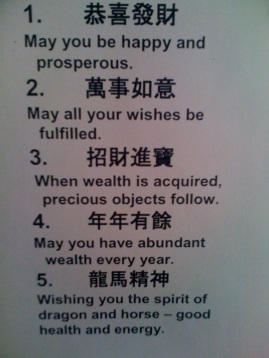In Australia, as in most other countries, we use the Gregorian calendar – also known as the Western, or Christian calendar – to guide civil activities.
Named after Pope Gregory XIII, who first introduced it in February 1582, it is strictly solar in that it is structured around the movement of the Earth around the Sun. A common year consists of a 365 days divided into 12 months of irregular lengths. Every 4 years an extra day is added to February to cover a quarter-of-a-day error not accounted for in the prior 3 years.
New Years Day in the Gregorian Calendar is January 1st.
Many Australians, as well as millions of others around the world, are currently celebrating Chinese New Year, the date of which is determined by The Chinese Calendar. Because this calendar is lunisolar – it is based on exact astronomical observations of the sun’s longitude and the moon’s phases – the date when described in Gregorian terms varies year to year (similar to the way that Good Friday and Easter Sunday vary annually according to phases of the moon).
According to timeanddate.com, The Chinese calendar does not count years in an infinite sequence. Instead, each year is assigned a name consisting of two components within each 60-year cycle. The first component is a celestial stem:
- Jia (associated with growing wood).
- Yi (associated with cut timber).
- Bing (associated with natural fire).
- Ding (associated with artificial fire).
- Wu (associated with earth).
- Ji (associated with earthenware).
- Geng (associated with metal).
- Xin (associated with wrought metal).
- Ren (associated with running water).
- Gui (associated with standing water).
The second component is a terrestrial branch. It features the names of animals in a zodiac cycle consisting of 12 animals, listed below:
- Zi (rat).
- Chou (ox).
- Yin (tiger).
- Mao (rabbit).
- Chen (dragon).
- Si (snake).
- Wu (horse).
- Wei (sheep).
- Shen (monkey).
- You (rooster).
- Xu (dog).
- Hai (boar/pig).
News Years Day this year was Sunday February 10th, but celebrations are still ongoing (based on the number of functions my China-loving husband continues to attend). We are now in the year of the Water Snake.
Kung Hei Fat Choy!

[…] for preparing posts such as the ScienceforLife.365 12 Days of Christmas, Easter, Melbourne Cup and Chinese New Year to name a […]